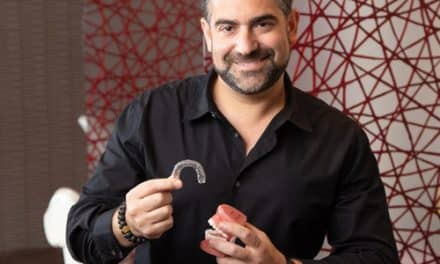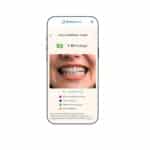Why do consumers who would benefit from orthodontic treatment postpone their treatment—especially when they can afford it?
By Hongsheng Tong, DDS, PhD, and John Pham, DDS, MS
There are 331 million people in the United States. Out of that number, there are 184 million people who are 14 years and older that could benefit from orthodontic treatment.1 However, each year only 6 million people seek out orthodontic treatment in the United States which means that the untapped, untreated orthodontic market is 178 million, 30 times larger than the current treated market.2 What is it about the existing orthodontic options that has not compelled 178 million people to start orthodontic treatment? Looking at different industries may shed light on answering this question.
Today’s Consumers
From 1985 to 2010, Blockbuster was a household brand with 65 million customers renting movies in their stores at its peak. Today, Blockbuster is no longer in business and Netflix has revolutionized the industry growing to over 222 million subscribers streaming from the convenience of their homes. Do people love movies more today than they did in 1985? What this case study tells us is that even for something as simple as casual entertainment, people want to do less work to get what they want. If orthodontists can make the process easier for their patients, then the orthodontic market can be significantly expanded.
A second case study to look at is the personal digital assistant (PDA) market from 1997-2005 which had about 5 million users, similar to that number of orthodontic starts in the United States annually today. Today, PDA’s have been overtaken by smartphones where the iPhone has over 1 billion users. When the iPhone was introduced, it brought not only a calendar like the PDA had, but several other applications that fit people’s lifestyles. If orthodontists can offer options that better fit into someone’s lifestyle, then the orthodontic market can be significantly expanded.
The InBrace system is a modality of treatment that offers predictable, hidden, and compliance-free treatment that better fits the lifestyle of the untapped orthodontic market. Tooth movement with InBrace happens on autopilot through Programmed Non-Sliding Mechanics (PNM).3 Tooth movement on autopilot allows for patients to do less work to get the result they want. InBrace does not require lifestyle compromises as it allows patients to eat, drink, brush, floss, and smile the way they normally would if they were not undergoing orthodontic treatment. InBrace was designed to meet the needs of today’s consumers to help grow the orthodontic market.

Overview of the InBrace System
The InBrace system diverges fundamentally from traditional edgewise or straight-wire appliances through its use of PNM which enables tooth movement in all six degrees of freedom, including opening and closing spaces, on autopilot from day 1. PNM is enabled through the InBrace appliance design which features a novel bracket design in combination with the Smartwire which is custom designed for each patient using the provider’s approved InBrace Smile Design (Figure 1).
Once the orthodontic provider approves the InBrace Smile Design, which is the digital setup of the patient’s teeth that the orthodontist codesigns with an InBrace Smile Designer, the InBrace fitting kit will be fabricated and shipped within 2 weeks. The InBrace fitting kit is composed of 3D printed indirect bonding (IDB) trays preloaded with InBrace brackets and the Smartwires. InBrace was designed to be easy to use and fully delegable to assistants. So, InBrace is fitted by the assistant to the patient’s dentition using indirect bonding, and the vertical insertion self-ligation system makes it simple for the assistant to engage and disengage the Smartwires from the InBrace brackets.
The InBrace treatment sequence is composed of three stages: Stage I, Stage II, and an optional Digital Enhancement (DE). In Stage I, initial leveling and aligning is achieved with Smartwire 1. In Stage II, leveling and alignment is completed and inter-arch mechanics are performed with Smartwire 2. In Digital Enhancement, additional final detailing is performed if needed with DE-Smartwire 2.
Case Report 1
A 37-year-old female presented for a consult with the chief complaint of crooked teeth. Her two sons had previously been treated with traditional braces at my practice, and she previously was interested in orthodontic treatment when she was offered traditional braces or plastic aligners. After learning that my office offered InBrace, she started treatment at my office with the reasoning “With InBrace, I don’t have to plan my life around the braces, I can plan my life with the braces.”








Figure 2: Initial patient records
The patient presented with a skeletal and dental Class I with mild dentoalveolar protrusion (Figure 2). Her upper arch had moderate crowding with severe rotations in the upper incisors and the lower arch had minor crowding. The treatment objectives were to maintain the Class I relationship, resolve the crowding, and reduce the dentoalveolar protrusion with IPR.




Figure 3: Left, Smartwire 1 at initial fitting; right, at 3 months
All rotations were resolved after 3 months of InBrace treatment with Smartwire 1 which is a very flexible Smartwire that performs initial leveling and aligning (Figure 3). A larger Smartwire 2 was engaged at this 3-month appointment to reduce the play between the Smartwire and InBrace bracket to help finish leveling and aligning with greater precision. IPR was also performed to reduce the dentoalveolar protrusion at this appointment.






Figure 4: Intraoral photos showing treatment progress at 3 months (top) and 6 months (bottom).
At 6 months, Smartwire 2 completed leveling and alignment and all IPR spaces had closed without any additional clinician intervention besides engaging the Smartwire 2 (Figure 4). At this appointment, the patient expressed that she was very satisfied with treatment and was ready to finish treatment. Since all treatment objectives had been accomplished, the patient was debonded in the next appointment at 8 months (Figure 5).








Figure 5: Final records at 8 months with all treatment goals achieved.
Overall, this case was treated on autopilot in 8 months and 6 appointments where all treatment goals were achieved without any compromise to the patient’s lifestyle. The patient was very pleased with the outcome of her treatment and commented that no one knew she was straightening her teeth during the entirety of her treatment. This patient referred several new InBrace patients to my practice throughout and after her treatment.
Case Report 2
A 28-year-old male presented for a consult with the chief complaint of crooked teeth and deep bite. He had previously seen another orthodontist who had offered traditional braces or plastic aligners, and neither appealed to him because of the visibility of traditional braces and the compliance requirements of plastic aligners. He decided to start treatment at my practice because InBrace was offered and he liked that InBrace was compliance free and hidden behind the teeth.








Figure 6: Initial patient records
The patient presented with a skeletal and dental Class I with a 4 mm overjet and a 7 mm, 100% impinging deep bite (Figure 6). He had moderate crowding in the lower arch, a deep curve of Spee in the lower arch, and severely retroclined upper and lower incisors. The treatment objectives were to improve the impinging deep bite by leveling the upper and lower curve of Spee, improve the inclination of the maxillary and mandibular incisors, and resolve the lower crowding.


Figure 7: Smartwire 1 at initial fitting





Figure 8: Treatment progress at 4 months
At the fitting appointment where the upper and lower brackets were placed through indirect bonding, the upper anterior brackets served as a bite turbo which opened up the patient’s bite (Figure 7). Leveling and aligning was complete after 4 months of InBrace treatment with Smartwire 1 (Figure 8). Smartwire 2 was engaged at this 4-month appointment and buccal buttons were bonded to run posterior vertical elastics to close the posterior open bite. At 11 months, the posterior open bite was closed, and the patient expressed he was very satisfied with treatment and was interested in finishing treatment (Figure 9). However, he allowed me to continue treating him to improve the upper and lower incisor torque further.





Figure 9: Treatment progress at 11 months








Figure 10: Final records at 18 months with all treatment goals achieved.
A Digital Enhancement was ordered where additional torque was designed for the upper and lower incisors in the Digital Enhancement Smile Design. These DE Smartwires were delivered at 12 months and allowed to express torque for 6 months. The patient was debonded at 18 months and 10 appointments where all treatment goals were achieved with minimal compromise to the patient’s lifestyle (Figure 10). This patient was very satisfied with his treatment and has referred several friends and family to my practice for InBrace treatment.
Overall, treatment with InBrace has been predictable, efficient, and profitable in my practice, and my practice has seen significant growth by tapping into a new patient pool who were looking for an easier orthodontic solution that better fits their lifestyle. OP
References
- Prudour. Global Orthodontic, Invisible Orthodontic and Lingual Orthodontic Market. 2018
- Hung M., Su S., Hon E.S., Tilley, E., Macdonald A., Lauren E., Roberson, G., Lipsky, M.S . Examination of orthodontic expenditures and trends in the United States from 1996 to 2016: disparities across demographics and insurance payers. BMC Oral Health. 21:1–10, 2021
- Tong, H., Weissheimer, A., Pham, J., Lee, R., Redmond, W.R. Lingual Orthodontics Redefined with Automation and Friction-Free Mechanics. J. Clin. Orthod. 53:214–24, 2019.

Hongsheng Tong, DDS, PhD, earned his dental degree from Beijing University, School of Stomatology, and his PhD and orthodontic certificate from the University of Southern California (USC). He is the co-founder and the primary inventor of the InBrace system. He is a diplomate of the American Board of Orthodontics, an associate member of the Edward H. Angle Society, and an adjunct clinical assistant professor at USC. He has been in private practice in Chino and Riverside, Calif, for more than 20 years.

John Pham, DDS, MS, earned his BS in electrical engineering and dental degree from the University of California at Los Angeles (UCLA) and his Master’s and orthodontic certificate from USC. He is the co-founder and chief medical officer of InBrace. He is a diplomate of the American Board of Orthodontics and an associate member of the Edward H. Angle Society.










